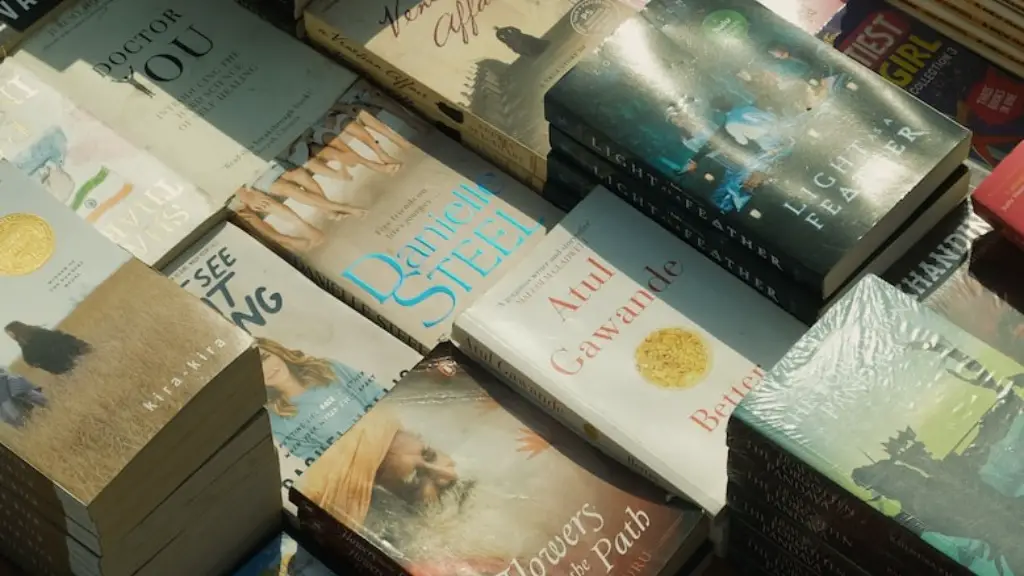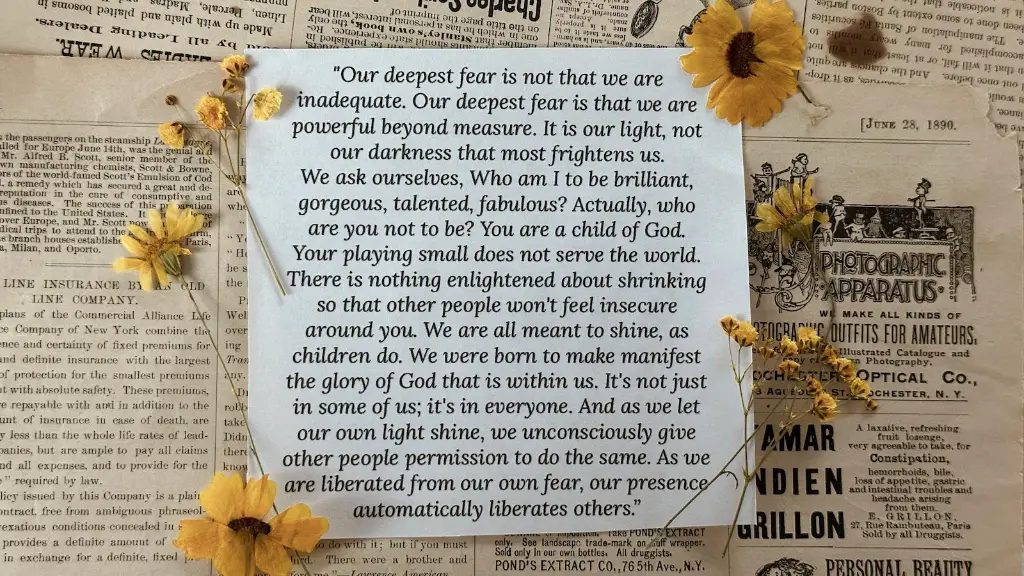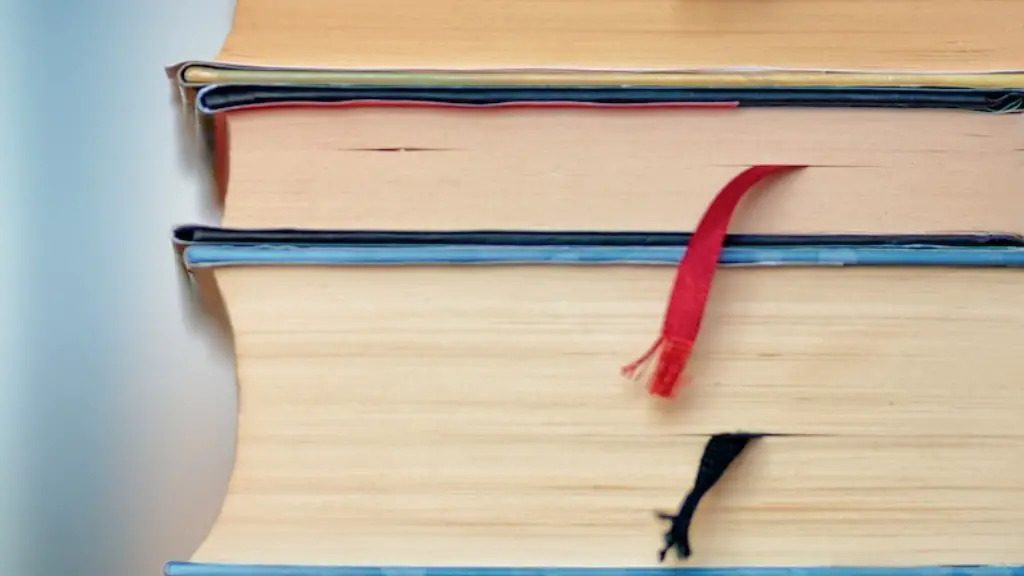Imagery is a powerful tool for evoking emotion, creating suspense, and showing rather than telling. It is often seen as a key component of the successful poem, utilizing descriptive language to bring vividness and power to the work. Through imagery, poets are able to generate a feeling of understanding with the reader and often create compulsive and more compelling poems. Below we will discuss why imagery is important in poetry and how it can be used effectively.
Firstly, imagery supports the mood and theme of the poem. Through figurative language, such as metaphor, simile, and personification, the poet is able to communicate the intended feeling more effectively. Complex emotions, such as sadness, joy, anger, surprise, and fear, can be expressed in vivid imagery that allows the reader to empathize with the poet. For example, Robert Frost’s poem, “The Road Not Taken,” uses imagery of a forking road and yellow wood to illustrate the concept of regret over a choice not made and indecision about life’s choices.
Additionally, imagery can build suspense and add tension to a poem. This can create a vivid story and grip the reader, as they become more invested in the poem. For example, in Alfred Lord Tennyson’s “The Kraken,” the imagery of a giant sea monster is used to describe an epic struggle between good and evil. By using vivid descriptions of the sea monster, the mood of the poem is set and the reader is pulled in, eager to find out what will happen next.
Moreover, imagery enables a poet to show the reader their perspective and convey the message of their poem. For example, in William Wordsworth’s “I Wandered Lonely as a Cloud,” the imagery of a daffodil field is used to portray the poet’s sense of awe and joy. By using figurative language, the poet is able to draw the reader into their vision and give them an understanding of the emotions they are expressing.
Finally, imagery helps to create a more a compelling and interesting poem. Alliteration, assonance, and rhyme are all tools of imagery that can make a poem more interesting and engaging. Repetition of words and sound patterns can help to emphasize a certain idea or evoke an emotional response. For example, in Edgar Allen Poe’s “The Raven,” the repetition of the word “nevermore” creates a feeling of despair and foreboding.
Variety of Structures
Using imagery to convey a message or evoke an emotion is not limited to figurative language. Poets are also able to incorporate a variety of structures in their works to express their ideas. Through the use of narrative elements, such as plot, character development, setting, and tone, poets are able to create a more vivid story. For example, in William Shakespeare’s “Sonnet 18,” the imagery of a summer day is used to describe both the beauty of the young man and the passing of time. By building a narrative structure, the poet is able to tie the imagery together and create a more effective piece.
Poets are also able to incorporate philosophical ideas in their works to convey a more universal experience. Through highly metaphysical imagery, poets are able to express their feelings and thoughts on life, death, and the relationship between humans. For example, in John Donne’s “The Relic,” the imagery of a graveyard is used to communicate the idea of immortality and the connection between a person and their physical remains. By combining both structure and imagery, the poet is able to generate a feeling of understanding with the reader and convey their perspective.
Nature of Imagery
In addition to structure and narrative elements, poets are also able to incorporate imagery of nature in their works. Nature imagery can be used to symbolize a particular emotion or idea and to provide a deeper understanding of the poem. For example, in Christina Rossetti’s “Remember,” she uses imagery of a tree to symbolize both death and rebirth. By using imagery of nature, the poet is able to convey a universal experience and evoke an emotional response from the reader.
Furthermore, poets have been using imagery of nature since the beginning of time as a way to illustrate the beauty of the natural world. By using imagery of natural beauty, poets are able to evoke a feeling of awe and appreciation for the wonders of the earth. For example, in William Wordsworth’s “The World is Too Much with Us,” the imagery of the sea is used to illustrate the beauty of nature and the need to take notice and appreciate it. By using such vivid imagery, the poet is able to express the importance of nature and its beauty.
Symbolism
In addition to imagery of nature, poets use symbolism as a form of imagery. By incorporating symbols in their works, poets are able to communicate deeper and more complex ideas. Symbols can be used to represent not only a particular feeling or emotion, but also a moral or philosophical story. For example, in Robert Frost’s “The Road Not Taken,” the image of the forking path is used to symbolize a decision not yet made or life’s choices. By utilizing symbols, the poet is able to communicate a more universal experience and evoke an emotional response from the reader.
Moreover, symbolism and allegory are often used in religious texts as a way to communicate more abstract ideas. By using symbolism, authors are able to illustrate the deeper meaning of their text and open up new avenues of interpretation. For example, in John Milton’s “Paradise Lost,” the imagery of the Garden of Eden is used to symbolize innocence and morality, as well as the battle between good and evil. Through the use of symbolism, Milton is able to express a more complex moral story to the reader.
Conclusion
Imagery is an important tool for poets as it allows them to evoke emotion, build suspense, and show rather than tell. Through figurative language, poetic structure, and symbols, poets are able to generate a feeling of understanding with the reader and create more compelling and interesting works. Imagery is a powerful tool that can help to improve the quality of a poem and ensure that it resonates with the reader.



